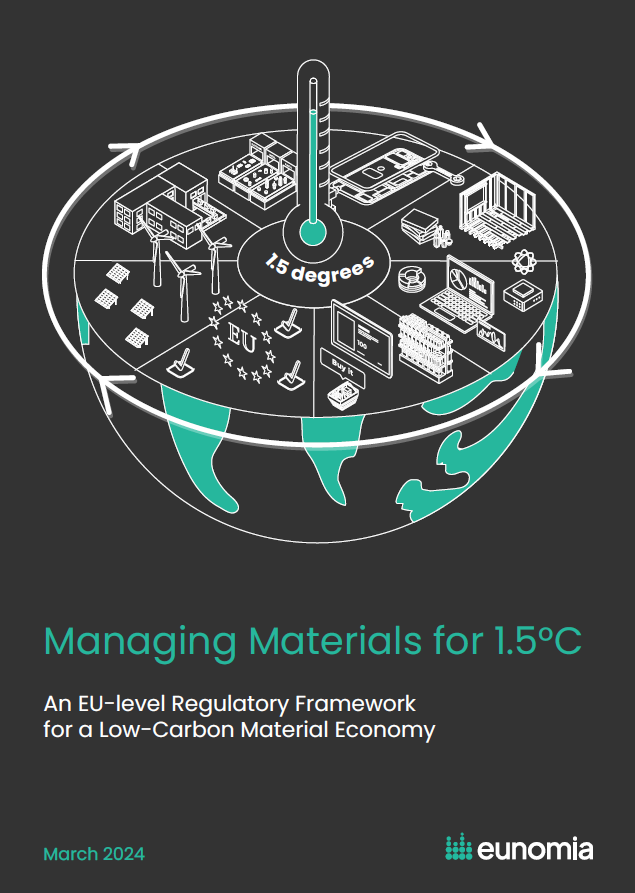
Now is the time to build an effective EU policy framework for managing materials – one that will accelerate Europe’s transition to a circular economy, support a strong industrial strategy, and make it easier to do business in Europe.
This joint report by Eunomia Research & Consulting, Handelens Miljøford, Minderoo Foundation, TOMRA, and Zero Waste Europe sets out the components of a regulatory framework that will:
– Harness the power of the Single Market and sustain its unity, enabling a fair and competitive system for all: business, industry, and consumers.
– Minimise administrative burdens for businesses operating in the EU.
– Support a fit-for-the-future industrial strategy that keeps Europe internationally competitive.
– Safeguard the bloc’s material security amid geopolitical uncertainties and price volatility.
– Consolidate Europe’s global leadership in circular economy and digital product policy.
Available in English.
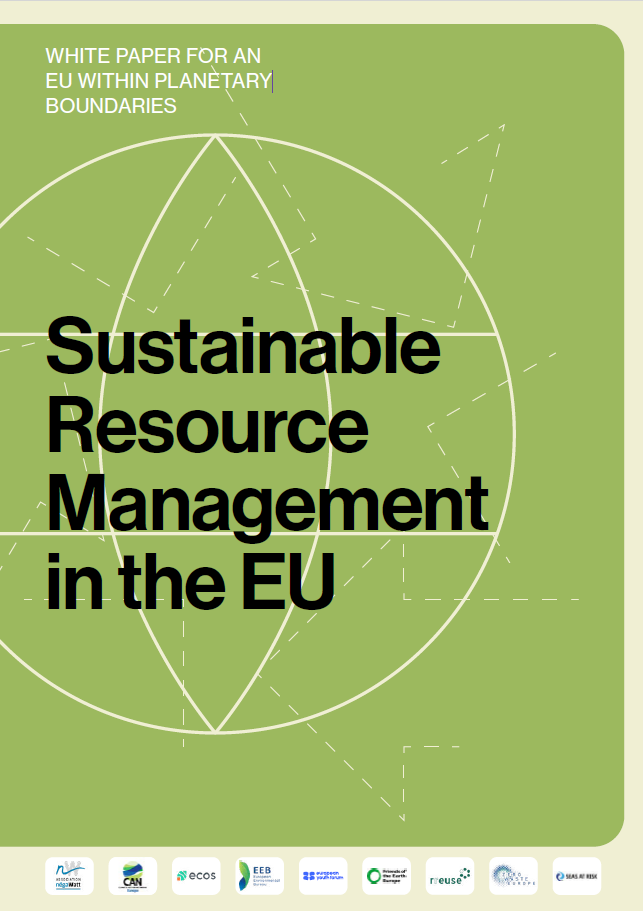
White paper for an EU within planetary boundaries
Resource use is the big blind spot in the EU’s climate policy. 90% of global biodiversity loss and water stress, 50% of global greenhouse gas emissions, and over 30% of air pollution health impacts are caused by resource extraction and processing. We are calling on the EU to introduce a framework on sustainable resource management with science-based binding reduction targets. This policy paper, co-produced with eight other NGOs, outlines policy recommendations and arguments in favour of urgent action.
Available in English.
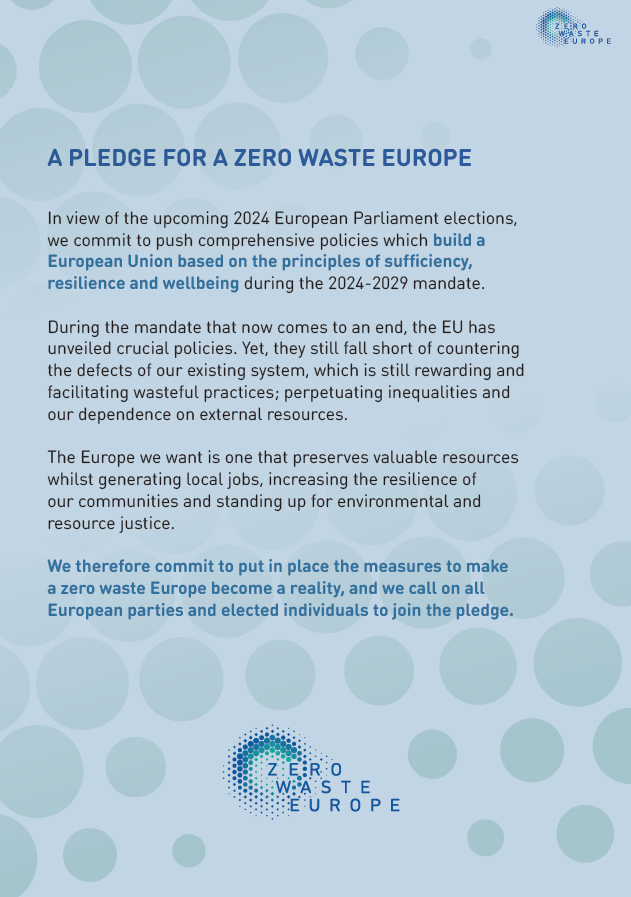
In view of the upcoming 2024 European Parliament elections, we commit to push comprehensive policies which build a European Union based on the principles of sufficiency, resilience and wellbeing during the 2024-2029 mandate.
We therefore commit to put in place the measures to make a zero waste Europe become a reality, and we call on all European parties and elected individuals to join the pledge.
Available in English.
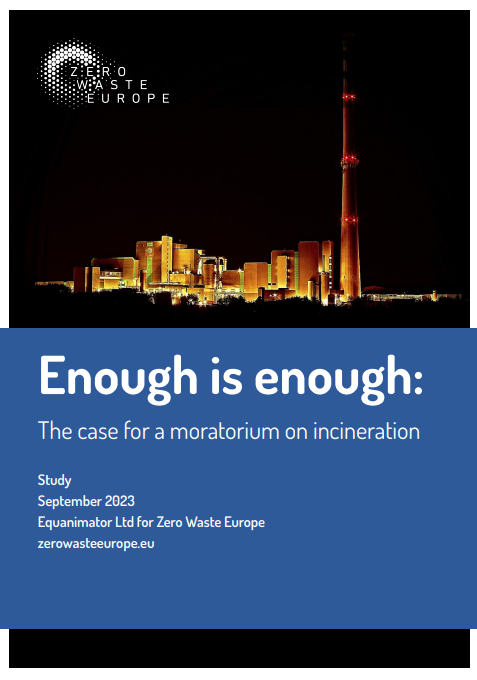
This report by Zero Waste Europe highlights a critical concern surrounding the surplus waste incineration capacities in the European Union. This comprehensive study reveals a troubling pattern of annual growth in waste incineration capacity, with a surplus reaching 60 million tonnes in 2020 and the potential to soar to a staggering 220 million tonnes by 2023. The report underscores the urgent need for EU-wide measures and recommends a reevaluation of incineration’s position in the waste hierarchy, potentially reclassifying it as a disposal operation, to foster more sustainable waste management practices throughout the region.
Executive summary available in English, Italian, and Bulgarian.
Full report available in English.
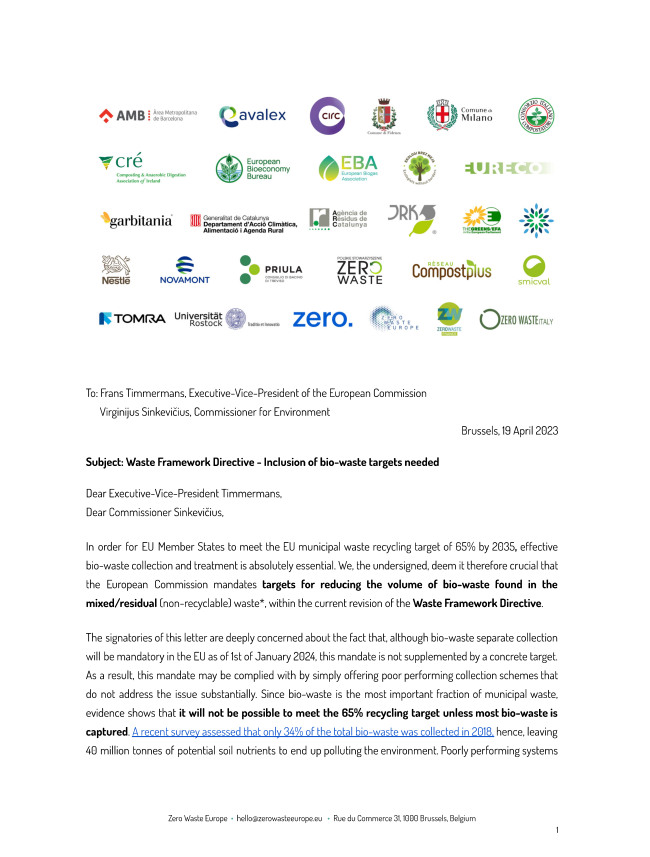
The mandatory bio-waste collection in the EU, slated to begin on the 1st of January 2024, lacks concrete collection targets which will pave the way for inadequate schemes that fail to address the issue at hand. Bio-waste holds immense potential for recycling valuable resources. Yet, evidence shows that without a concerted effort to capture and utilise bio-waste, we will fall short of the ambitious 65% recycling target by 2035. A mere 34% of the total bio-waste was collected in 2018, leaving a staggering 40 million tonnes of potential soil nutrients to be discarded, polluting our environment and squandering invaluable resources. Our environment, our communities, and our future generations deserve better.
The signatories of this joint letter, including MEPs, environmental organisations, and industry leaders, demand mandatory targets on bio-waste reduction within the current revision of the WFD, and call on the European Commission to provide proper guidance and tools to Member States to achieve them. Adopting specific targets for biowaste in residual waste aims to incentivize proper collection and recycling practices.
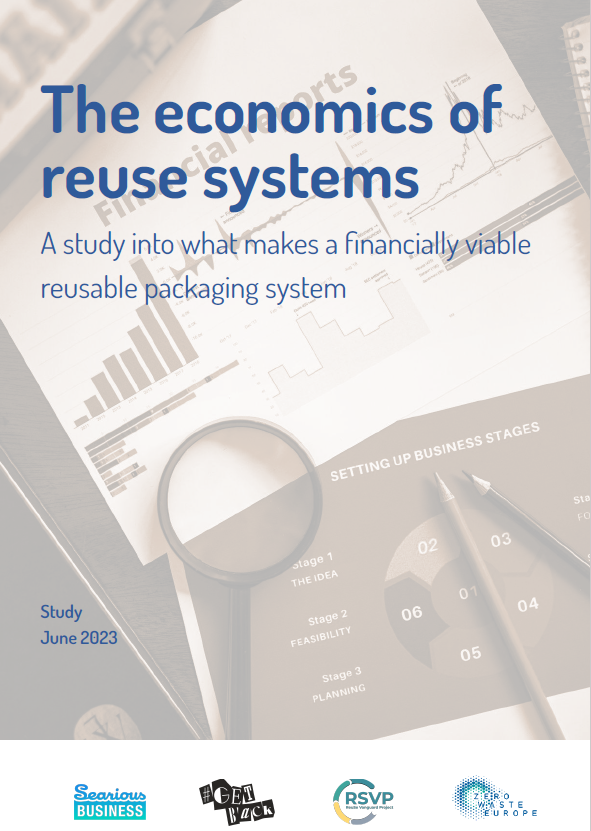
After elimination, the widespread uptake of reusable packaging has the highest potential to reduce plastic production. This view is sustained by a recent shift in legislative focus in the European Union’s Packaging and Packaging Waste Regulation (PPWR) and the United Nation’s Global Plastic Treaty to end plastic pollution. However, several brands and industry associations have been hesitant to wholeheartedly embrace reusable packaging.
The study by Searious Business and Zero Waste Europe examines 3 packaging categories in an open loop system (so not within one location), in Spain as an archetype country: 1) food containers for takeaway food, 2) secondary transport packaging and 3) beverage bottles. The results show that reuse packaging will only become even more economically viable in the next few years and providing faster return on investments.
Executive summary available in English, Estonian, Montenegrin, Ukrainian, and Polish.
Full report available in English, German, French, Spanish, Dutch, and Italian.
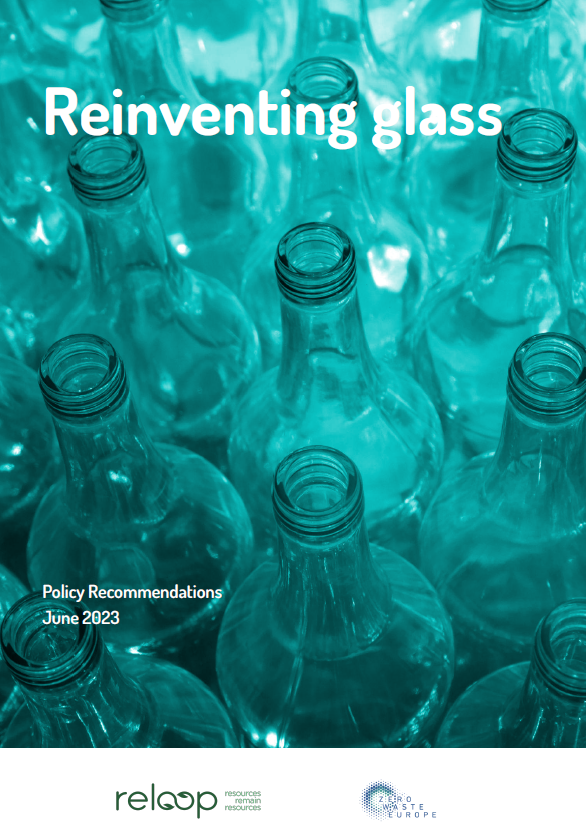
Single-use glass is proven to have the highest overall environmental footprint compared to other single-use materials. On the other hand, reusable glass offers the greatest potential to reduce environmental impacts: reusable glass bottles produce 85% fewer carbon emissions than their single-use counterparts, 75% fewer carbon emissions than plastic (PET), and 57% fewer carbon emissions than aluminium cans.
Taking into account the findings of the ZWE-Eunomia ‘Decarbonisation of single-use beverage packaging’ study, ZWE and Reloop urge the EU Packaging & Packaging Waste Regulation to set the path for single-use glass to be replaced with reusable glass in the coming years.
Available in English, Polish, and Croatian.
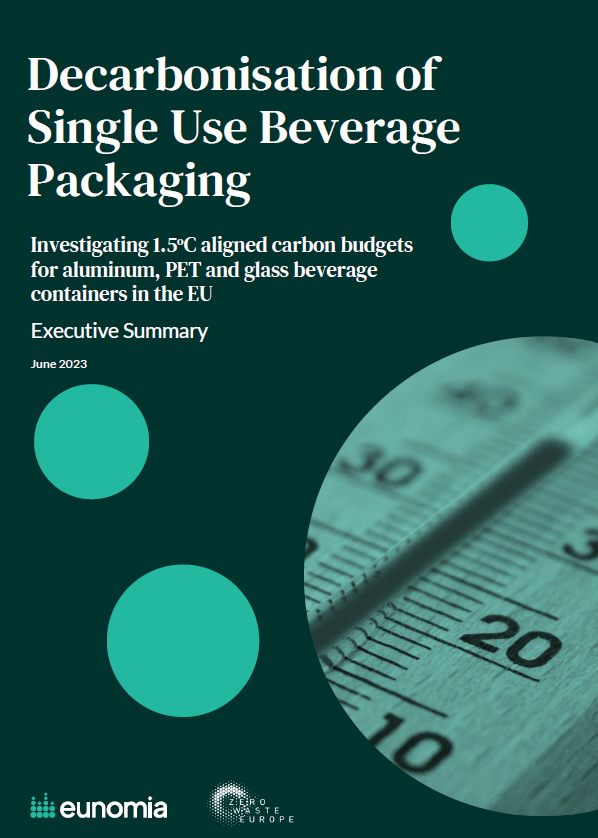
Commissioned to Eunomia Research & Consulting by Zero Waste Europe, this study builds upon Eunomia’s previous investigation into materials decarbonisation pathways in the report “Is Net Zero Enough for the Material Production Sector?”.
Focussing on the four materials with the greatest emissions globally, the study found that each will have great difficulty in reducing GHG emissions in line with a 1.5°C future by 2050, particularly if mass consumption continues and increases. Whilst studying the global material picture provides valuable insights; policymakers may find it more useful to have the same approach applied at the product level. Therefore, this study delves into the Net Zero pathways of aluminium, PET, and glass when utilised in beverage packaging within the EU, evaluating their potential performance within a cumulative GHG emissions budget that aligns with the goal of limiting global warming to 1.5°C.
Full report available in English. Executive summary available in English, French, and Latvian.
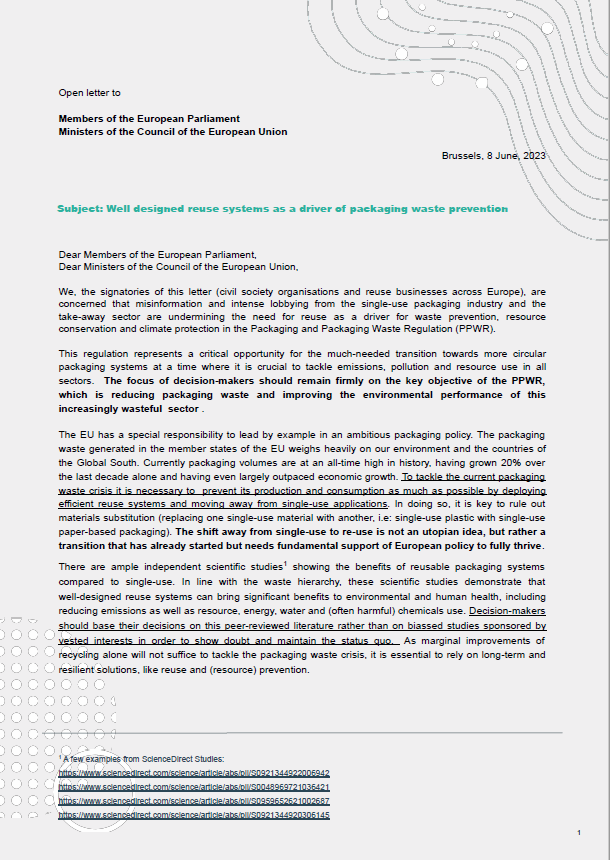
In an open letter, the Rethink Plastic alliance and a coalition of 79 organisations (including Zero Waste Europe) consisting of civil society organisations and businesses advocate for the integration of well-designed reuse systems as a catalyst for preventing packaging waste in the revision of the EU Packaging & Packaging Waste Regulation (PPWR).
Available in English.
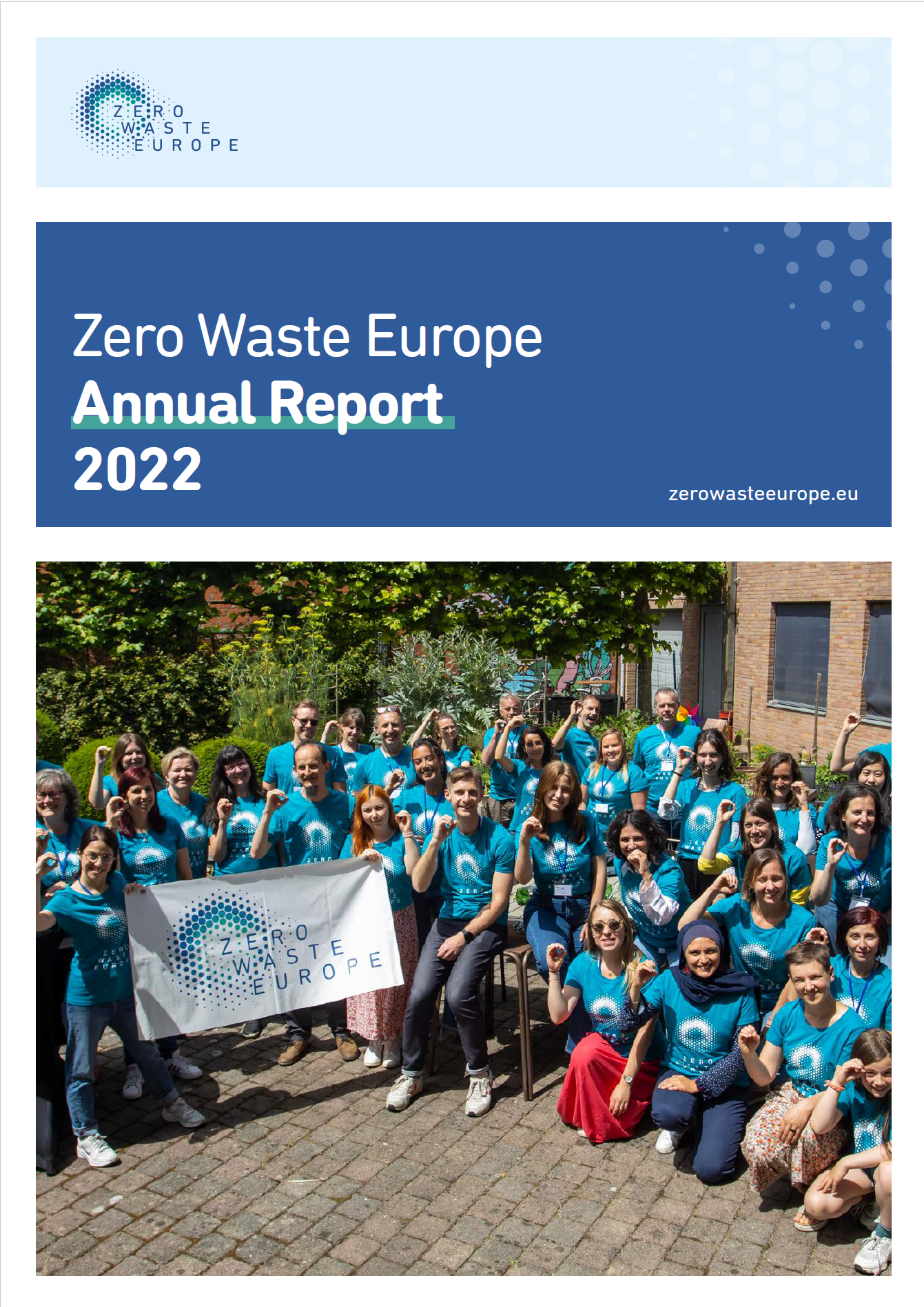
In 2022, ZWE made significant strides in implementing zero waste solutions, marked by the expansion of our Zero Waste Cities and Businesses work across Europe, and notable policy advancements which ensured an upward movement in the zero waste hierarchy towards waste prevention and reuse. As usual, our Annual Report brings you all the key highlights and victories of this fruitful past year – be it from the staff, our member organisations, or wider movement.
Available in English.
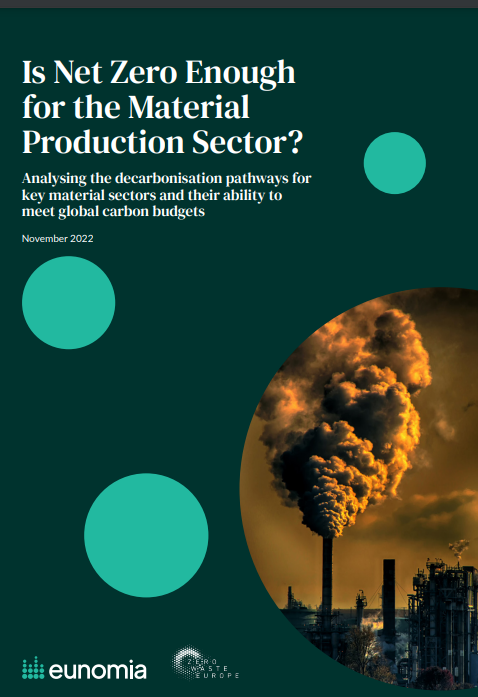
When considering the urgency of reducing GHG emissions there is a possibility that, despite the aims of the net zero pathways, the cumulative carbon emissions budget will be exceeded. This is due to the risks associated with deploying unproven technologies in some sectors.
This report by Zero Waste Europe and Eunomia allocated a risk factor associated with each intervention and quantified how this influences the likelihood of overshooting the remaining carbon budget. It also attempted to determine whether the overshoot can be reduced by accelerating the adoption model deployed for technological interventions.
Report available in English. Executive Summary available in English, Croatian, and French.
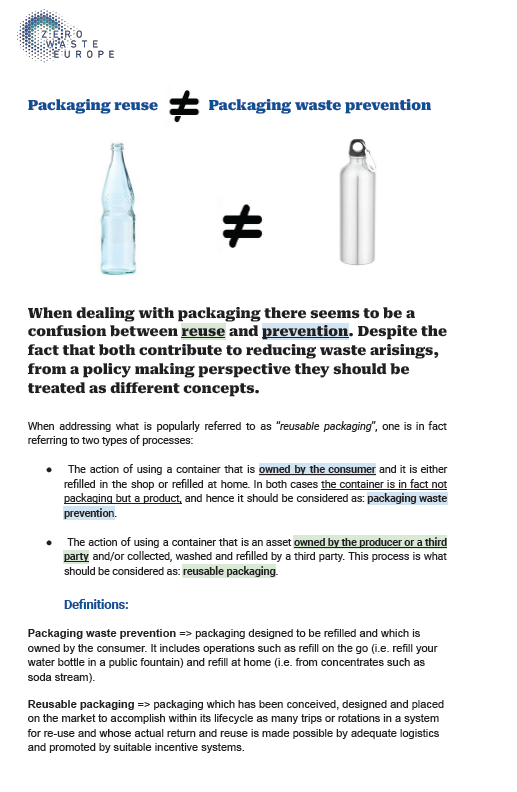
When dealing with packaging there seems to be confusion between reuse and prevention. Despite the fact that both contribute to reducing waste arisings, from a policy-making perspective they should be treated as different concepts.
Available in English.
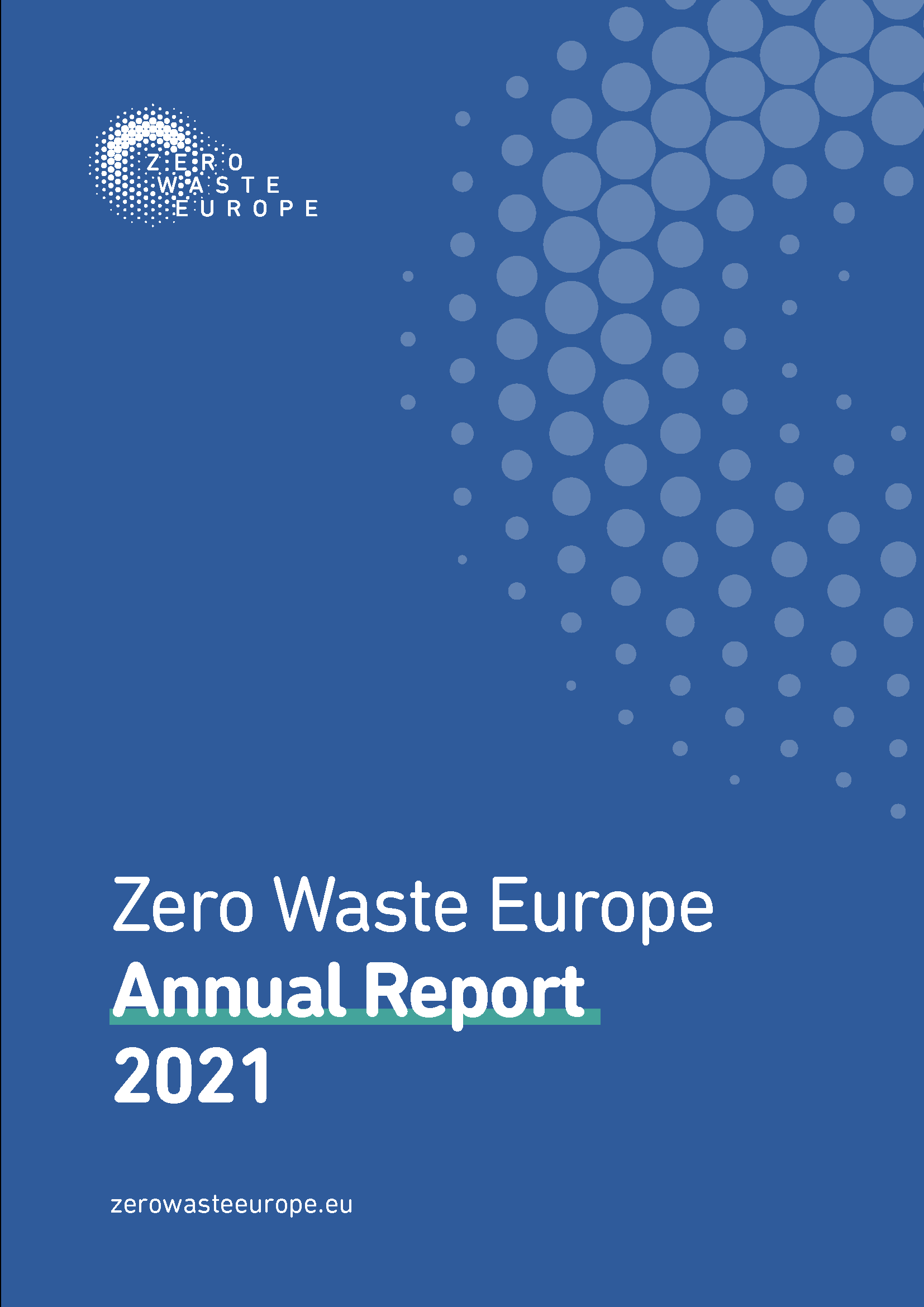
Zero Waste Europe redesigns our relationship with resources by empowering communities and changemakers across Europe. This Annual Report looks at our projects, our research, our successes, and all those who helped us create an impact in 2021!
Available in English.
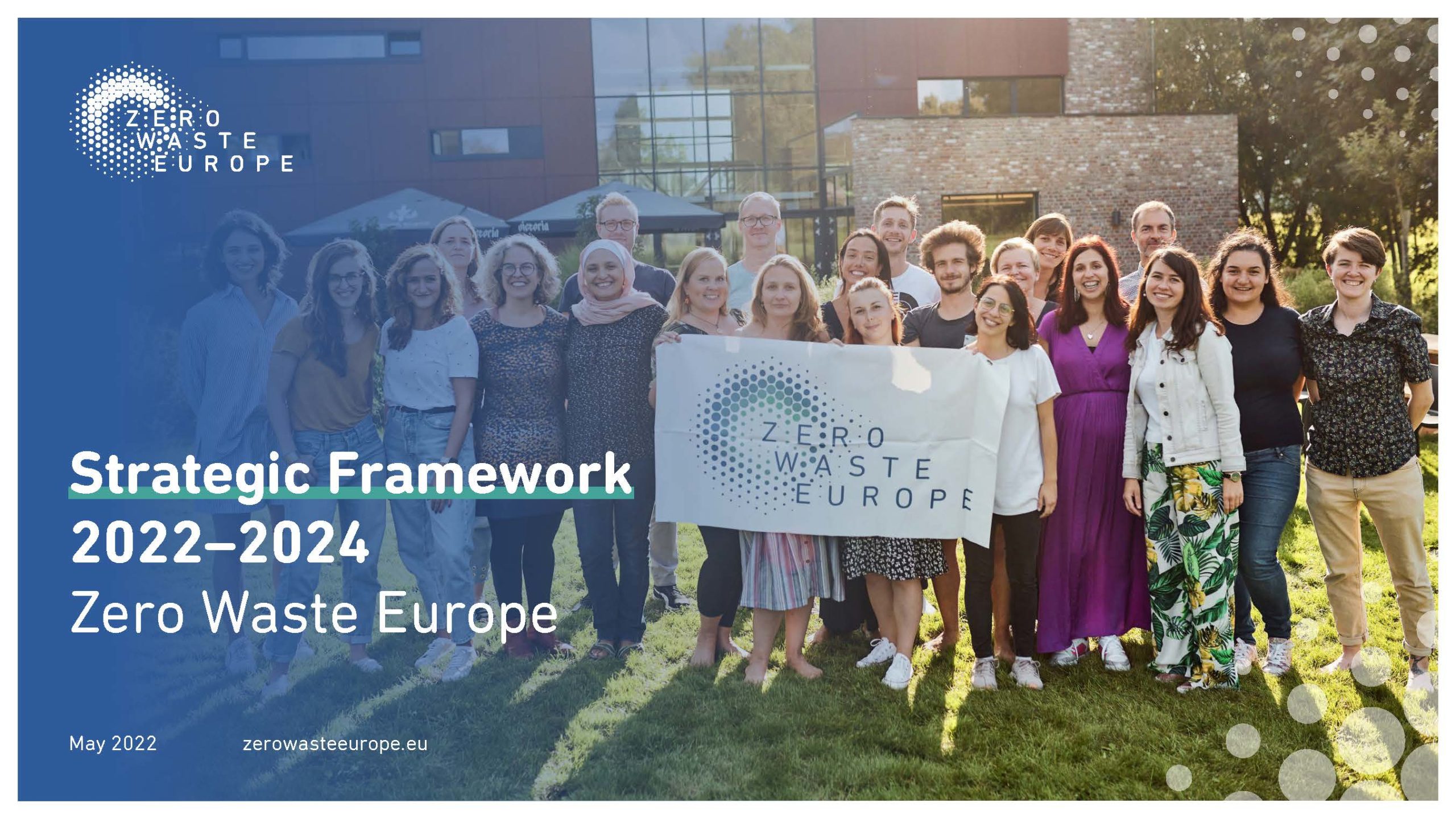
Europe is in the midst of a transition and zero waste is part of it.
Ten years ago, the concept of zero waste was laughed at. Today, zero waste is mainstream, from being considered a practical approach to implementing a circular economy to a trending lifestyle globally. The efforts from civil society groups in Europe and around the world pushed the debate higher in the waste hierarchy. If at any time over the last twenty years reuse and prevention had a chance, it is now. And ZWE is committed to bringing that change forward.
From a content perspective, for the next 3 years, we will focus on bringing IN incentives and funding for the transition, phasing OUT toxics, lifting UP reuse, pushing for BETTER recycling and bringing waste disposal DOWN.
Our Strategic Framework for 2022-24 outlines the ZWE roadmap and goals for the coming years, with the ultimate aim of helping us achieve a zero waste future for Europe (and for the world, while we’re at it).
Available in English.













